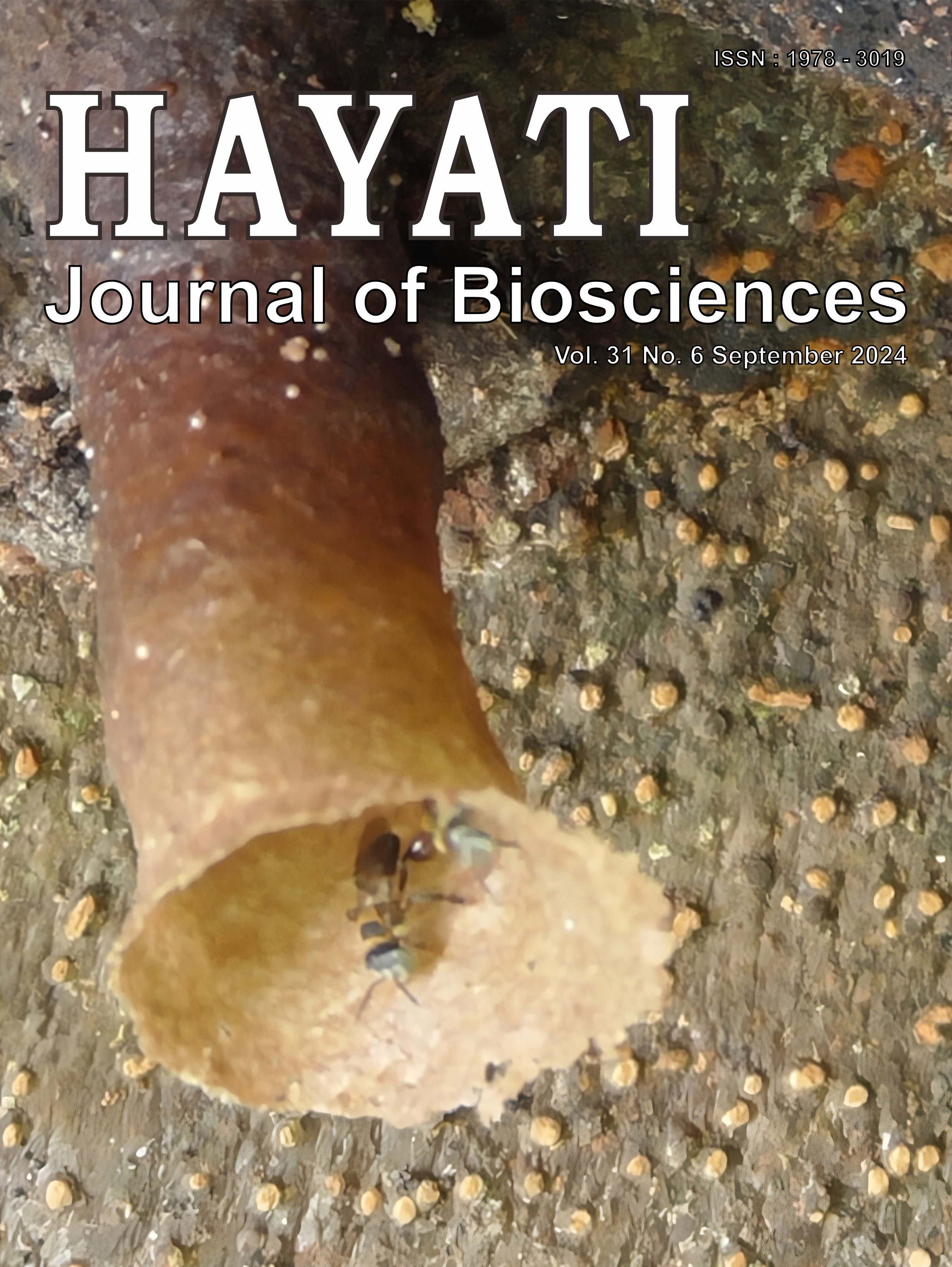Isolation of Endophytic Bacteria from Melon Root and Evaluation of Their Antagonistic Activity Against Acidovorax citrulli
Abstract
Endophytic bacteria are a potential biocontrol agent to control plant diseases. Controlling plant disease using bactericides has negative impacts, including the death of other organisms on plants. This research aimed to identify potential endophytic bacteria from melon roots for biocontrol against Acidovorax citrulli, the pathogen causing Bacterial Fruit Blotch (BLB) disease in the Cucurbitaceae family. A total of 11 endophytic bacteria were isolated from healthy melon roots. The isolates exhibited similar colony morphology with white, circular, convex elevation. Physiology and biochemistry tests revealed 8 isolates as Gram-negative and catalase-positive, while the remaining 3 were identified as Gram-positive and catalase-negative. A fluorescence test on King's B media indicated that the Gram-negative isolates could belong to the Pseudomonas genus. This study also confirmed Acidovorax sp. cultures isolated from infected melon plants many years ago as A. citrulli. Assessment of pathogenicity in the melon plants showed that A. citrulli isolate N2 was the most pathogenic. Based on the in vitro inhibition test, all the Gram-negative isolates formed inhibition zones ranging from 1.94-4.41 mm, suggesting their potential to inhibit the growth of A. citrulli. The EB6 isolate exhibited the highest inhibition zone at 4.41 mm ±0.28. five of the eight isolates tested (EA1, EB1, EB3, EB4, and EB6) did not exhibit any Hypersensitive Response (HR) reaction in the tobacco leaves, thus can potentially be used as a biocontrol agent against BLB disease in melon plants. Further studies are required to determine the species identity of the isolates and explore their application as biocontrol agents.
Downloads
Copyright (c) 2024 Ayu Novitasari, Riza Desnurvia, Reni Indrayanti

This work is licensed under a Creative Commons Attribution-NonCommercial 4.0 International License.
HAYATI J Biosci is an open access journal and the article's license is CC-BY-NC. This license lets others distribute, remix, tweak, and build upon author's work, as long as they credit the original creation. Authors retain copyright and grant the journal/publisher non exclusive publishing rights with the work simultaneously licensed under a https://creativecommons.org/
























.png) IPB University
IPB University Department of Biology
Department of Biology The Indonesian Biological Society
The Indonesian Biological Society 

